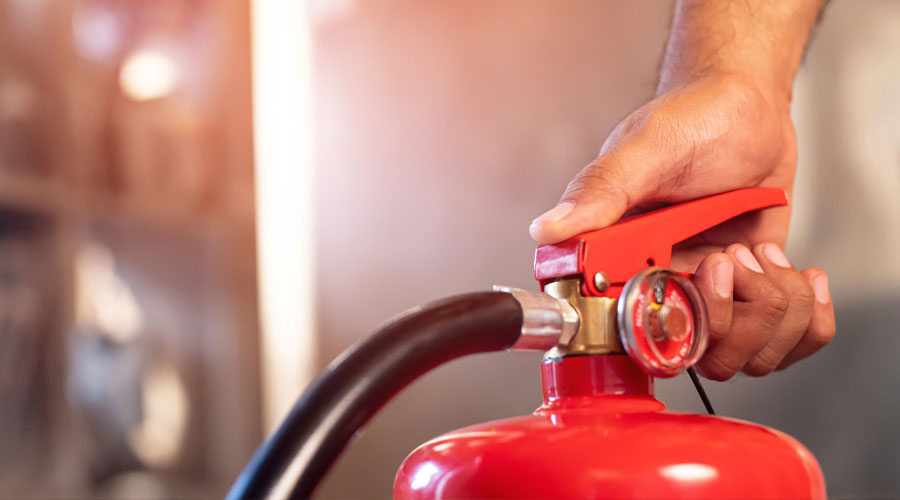Fire extinguishers are designed to fight fires in their early stages when the flames present a relatively minor hazard. Specifically, a fire extinguisher should be used when the fire is small, growing slowly, giving off little smoke and emitting minimal heat.
Knowing how to use a fire extinguisher during a workplace fire can make all the difference in preventing the flames from spreading and causing large-scale damage and injuries. With this in mind, it’s vital to understand the different types of fire extinguishers and basic operating procedures.
Types of Fire Extinguishers
Fire extinguishers are divided into different classes, with each class of extinguisher designed for certain types of materials and fires. Here is a breakdown of these classes:
- Class A fire extinguishers are designed to fight fires involving ordinary combustibles (e.g., wood, paper and cloth).
- Class B fire extinguishers are made to fight fires involving flammable liquids (e.g., paint, oil and lacquer).
- Class C fire extinguishers are designed to fight fires involving electrical equipment (e.g., appliances and power tools).
- Class D fire extinguishers are made to fight fires involving combustible metals (e.g., magnesium and titanium).
- Class K fire extinguishers are designed to fight fires involving combustible cooking oils and fats (e.g., sunflower oil and lard).
Using the wrong fire extinguisher can result in more damage than the fire itself. All extinguishers have nameplates identifying their specific usage instructions.
Basic Operating Procedures
In addition to selecting the correct type of fire extinguisher to put out a workplace fire, it’s essential to know basic operating procedures. Generally, following the PASS method when using a fire extinguisher is best. This method involves the following steps:
- Pull. The safety pin is usually held in place by a plastic seal and will pull off. Do not push down on the operating lever while pulling the pin, or it won’t come out.
- Aim. Aim at the base of the fire, the lowest flame closest to you. The base of the fire will recede from you as you use the extinguisher, so you must adjust your aim.
- Squeeze. The operating lever is above the carrying handle. The operating lever opens the valve when you squeeze it down. When you let go, the valve closes and the discharge stops.
- Sweep. Sweep the nozzle by moving your arm at the elbow. Direct the discharge to cover the entire width of the base of the fire.
Above all, remember that you should never feel like you must stay and fight a workplace fire. If you think your safety is at risk at any point, exit the premises immediately.
Speak to your supervisor for additional fire extinguisher safety guidance.
To learn more, reach out to CMB Insurance Brokers. We can provide you with valuable insights and guidance: call CMB at 780.424.2727 or click here to get a quote.

